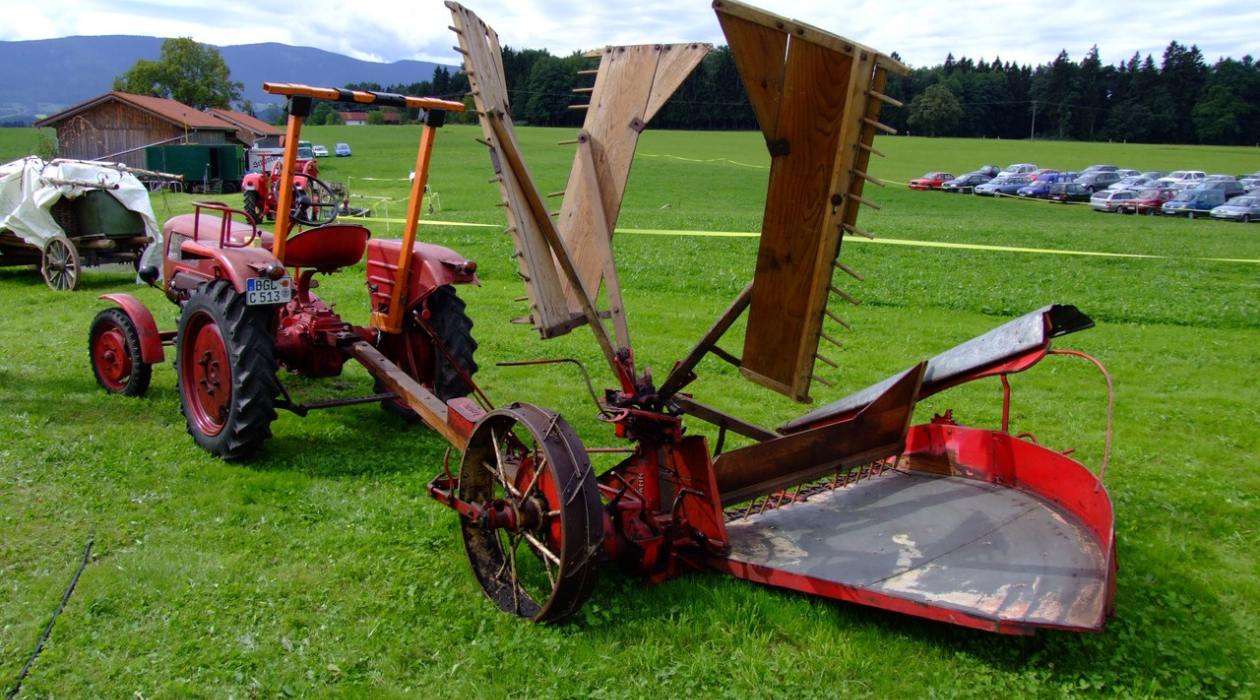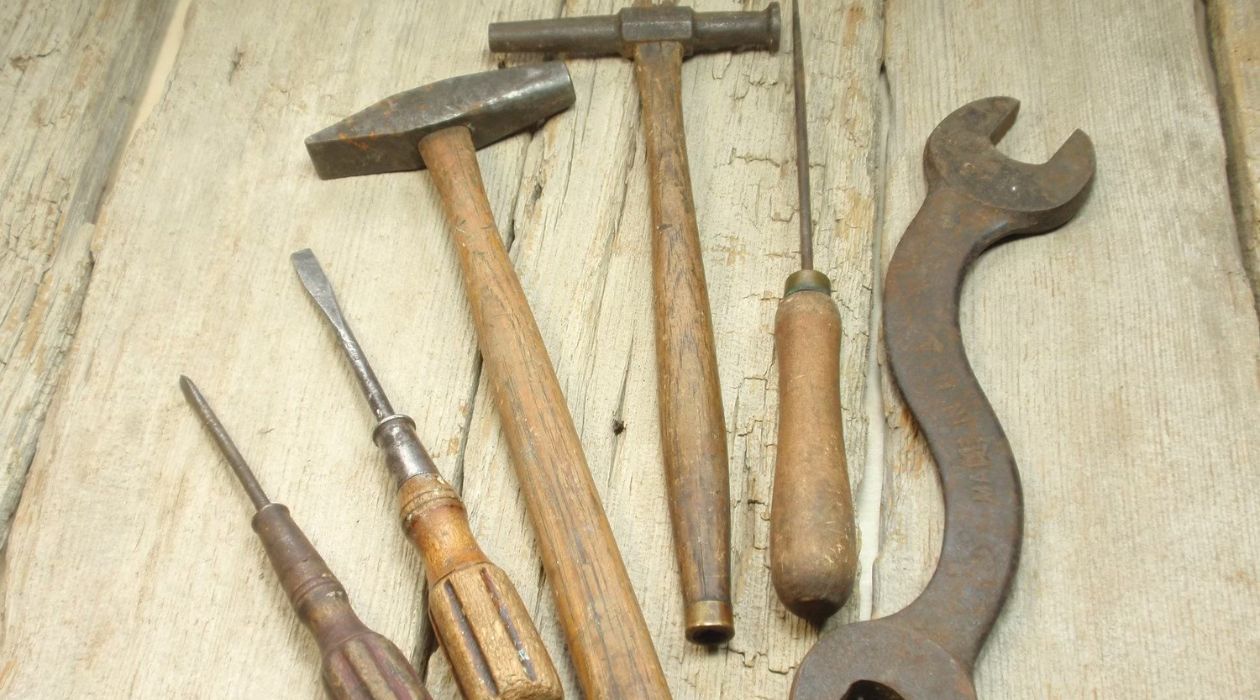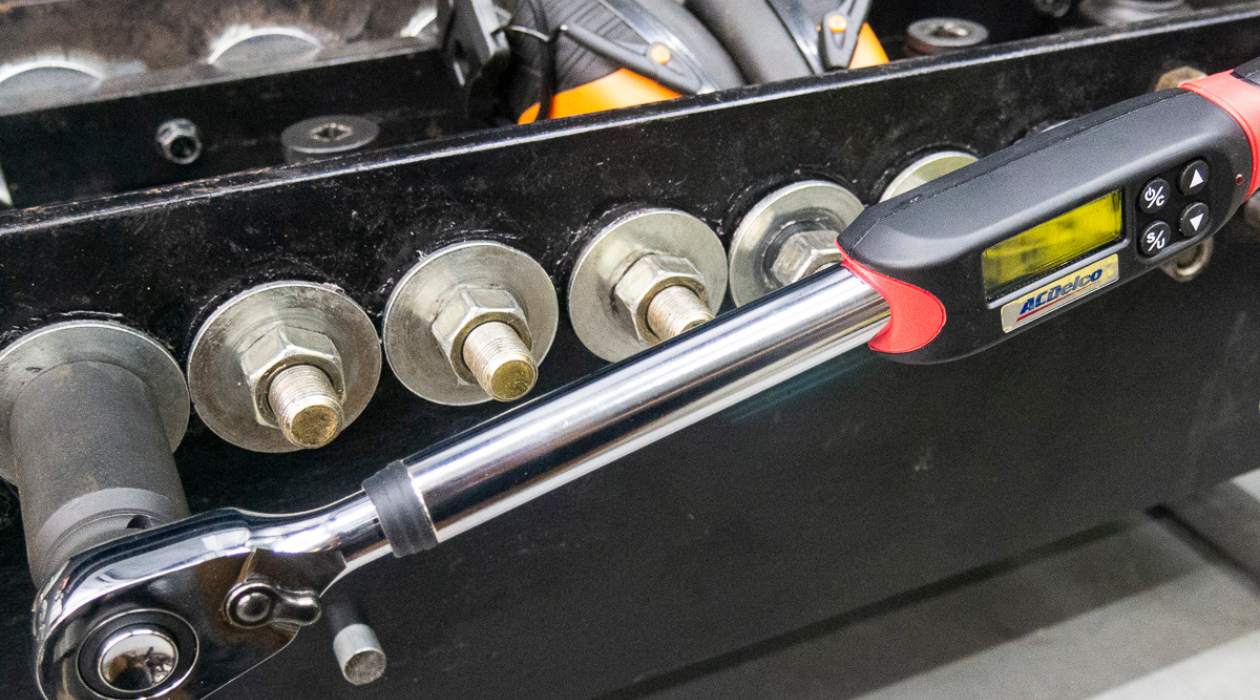Home>Articles>Why Was The Mccormick Reaper Better Than Hand Tools


Articles
Why Was The Mccormick Reaper Better Than Hand Tools
Modified: December 7, 2023
Discover the advantages of the McCormick Reaper over traditional hand tools in this informative article. Learn how this revolutionary invention changed the farming industry forever.
(Many of the links in this article redirect to a specific reviewed product. Your purchase of these products through affiliate links helps to generate commission for Storables.com, at no extra cost. Learn more)
Introduction
Before the invention of machinery, agriculture was a labor-intensive task that required hours of work under the scorching sun. Farmers relied on hand tools such as sickles and scythes to harvest their crops manually. However, manual labor was time-consuming and inefficient, often resulting in low productivity and a heavy burden on the farmers.
Fortunately, the agricultural industry witnessed a significant transformation with the introduction of the McCormick Reaper. Invented by Cyrus McCormick in the early 19th century, the McCormick Reaper revolutionized the way crops were harvested, providing a faster and more efficient alternative to traditional hand tools.
In this article, we will delve into the history of hand tools, explore the introduction of the McCormick Reaper, discuss its advantages, analyze its impact on agriculture, and compare it to the conventional hand tools.
Join us as we unravel the reasons why the McCormick Reaper was indeed better than hand tools and the enduring impact it had on the agricultural sector.
Key Takeaways:
- The McCormick Reaper revolutionized agriculture by increasing efficiency, reducing labor intensity, and improving yield quality, laying the foundation for the integration of technology into farming practices.
- The introduction of the McCormick Reaper marked a pivotal moment in the history of agriculture, offering significant advantages over traditional hand tools and spurring further technological advancements in the agricultural industry.
Read more: Why Are Air Tools Better Than Hand Tools
History of Hand Tools
Hand tools have been used in agriculture for centuries, dating back to the early civilizations. Ancient Egyptians, Romans, and Greeks utilized hand tools like sickles and scythes to harvest their crops manually. These tools had a simple design consisting of a handle and a curved blade, allowing farmers to cut through crops with precision.
As time went on, some improvements were made to hand tools. Handles were made from more durable materials like wood or metal, and the blades were sharpened for enhanced cutting efficiency. However, despite these minor advancements, hand tools were still limited in terms of productivity and speed.
One major drawback of hand tools was the amount of physical labor required. Farmers had to spend hours in the fields, bending down and manually cutting each individual stalk or sheaf of crops. This not only resulted in fatigue and strain on the body but also hindered the overall efficiency of the harvesting process.
With the advent of the Industrial Revolution, new technologies emerged that would forever change agriculture. Inventors sought to create machines that could perform the tasks of manual labor more efficiently and effectively. This led to the development of the mechanical reaper, a revolutionary agricultural machine that would eventually pave the way for the McCormick Reaper.
Introduction of the McCormick Reaper
The introduction of the McCormick Reaper marked a significant milestone in the history of agriculture. In 1831, Cyrus McCormick, a talented inventor from Virginia, unveiled his groundbreaking invention to the world. The McCormick Reaper was a horse-drawn machine designed to automate the process of harvesting crops, particularly wheat.
The McCormick Reaper featured a series of sharp blades positioned in a rotating motion, allowing it to cut through crops swiftly and efficiently. The machine was equipped with a wheeled platform that allowed it to move smoothly across the fields, while the blades made precise cuts and collected the harvested grain into a container.
This innovative invention provided a significant boost to agricultural productivity. Instead of relying on back-breaking manual labor, farmers could now quickly and effortlessly harvest much larger areas of land. The McCormick Reaper brought about a dramatic reduction in the time and effort required to harvest crops, revolutionizing the agricultural industry.
McCormick’s invention sparked a wave of technological advancements in agriculture and set the stage for the future development of harvesting machinery. The success of the McCormick Reaper led to its popularity and widespread adoption among farmers, transforming the way crops were harvested across the United States and eventually throughout the world.
The introduction of the McCormick Reaper was a game-changer for the agricultural sector, representing a remarkable shift from traditional hand tools to automated machinery. Its impact on farming practices was far-reaching, improving efficiency, increasing productivity, and laying the foundation for further agricultural innovations.
Advantages of the McCormick Reaper
The McCormick Reaper brought a multitude of advantages that revolutionized the harvesting process and elevated agricultural productivity. Let’s explore some of the key advantages of this groundbreaking invention:
- Increased Efficiency: The McCormick Reaper significantly increased the speed and efficiency of the harvesting process. It could cut down a large area of crops in a fraction of the time it took with hand tools. This allowed farmers to cover more land and harvest crops in a more timely manner.
- Reduced Labor Intensity: Manual harvesting using hand tools required a substantial amount of physical labor. The McCormick Reaper reduced the need for labor-intensive tasks, relieving farmers of back-breaking work. With the machine doing the cutting, farmers had more energy and time to focus on other aspects of farming.
- Precision and Consistency: The McCormick Reaper was designed to make precise and consistent cuts while harvesting crops. This ensured that the crops were harvested at the optimal stage of maturity, resulting in higher quality yields. The uniformity of the cuts also facilitated the subsequent processing and transportation of the harvested crops.
- Ability to Harvest Difficult Terrain: Hand tools were often limited in their capacity to harvest crops in challenging terrains, such as steep slopes or rough terrain. The McCormick Reaper, being a mechanical machine, was capable of navigating various types of terrain, enabling farmers to harvest crops in areas that were previously difficult or even impossible to reach.
- Increase in Yield: The increased efficiency and effectiveness of the McCormick Reaper led to higher crop yields. Farmers were able to harvest larger areas of land, resulting in more crops being brought to market. This increase in yield not only provided economic benefits to the farmers but also helped feed growing populations and contribute to overall food security.
The advantages of the McCormick Reaper were transformative, offering a massive leap forward in the efficiency and productivity of agricultural practices. Its introduction was a turning point in the history of farming, forever changing the way crops were harvested, and setting the stage for technological advancements in the agricultural industry.
The McCormick Reaper was better than hand tools because it increased efficiency and productivity in harvesting crops, reducing the need for manual labor and allowing for larger-scale farming operations.
Efficiency of the McCormick Reaper
The efficiency of the McCormick Reaper was a key factor in its widespread adoption and the subsequent transformation of the agricultural industry. This innovative machine revolutionized the harvesting process, providing numerous advantages over traditional hand tools.
One of the primary aspects that contributed to the efficiency of the McCormick Reaper was its speed. With a single pass, the machine could cut a substantial amount of crops quickly and precisely. This enabled farmers to cover more land in less time, significantly increasing their productivity.
Moreover, the McCormick Reaper was designed to be pulled by horses, which added to its efficiency. The horses provided the necessary power to move the machine effortlessly through the fields, reducing the physical strain on the farmers themselves. This allowed for longer and more sustained periods of harvesting, further boosting productivity.
In addition, the mechanical nature of the McCormick Reaper introduced automation into the harvesting process. Unlike hand tools that required manual labor for each cut, the machine’s rotating blades allowed for continuous cutting without the need for frequent breaks. This uninterrupted cutting process significantly improved efficiency and reduced the time needed for harvesting.
Furthermore, the McCormick Reaper was designed to be adaptable to different crop conditions. Farmers could adjust the cutting height and speed to suit the specific crop type and density. This adaptability ensured optimum performance and efficiency for various crops, making the machine versatile and adaptable to different agricultural conditions, improving overall productivity.
An important aspect contributing to the efficiency of the McCormick Reaper was its ability to minimize crop losses. The machine was designed to catch and collect the harvested grain efficiently, reducing waste and ensuring that a higher proportion of the crops were successfully harvested. This not only improved efficiency but also increased profitability for farmers.
Overall, the efficiency of the McCormick Reaper was a game-changer for the agricultural industry. Its speed, power, adaptability, and ability to minimize crop losses helped farmers increase their productivity, save time and effort, and ultimately transform the way crops were harvested on a large scale.
Read more: Why Is Grass Better Than Turf
Impact of the McCormick Reaper on Agriculture
The introduction of the McCormick Reaper had a profound impact on the agricultural industry, revolutionizing the way crops were harvested and transforming farming practices. Let’s explore the significant impacts that the McCormick Reaper had on agriculture:
- Increased Efficiency and Productivity: The McCormick Reaper dramatically increased the efficiency and productivity of crop harvesting. The machine could harvest crops at a much faster pace than manual labor, allowing farmers to cover larger areas of land in less time. This boost in efficiency translated into increased crop yields and overall productivity in the agricultural sector.
- Labor Savings: Prior to the invention of the McCormick Reaper, manual harvesting using hand tools required a significant amount of physical labor. The machine’s introduction reduced the labor-intensive nature of the harvesting process, enabling farmers to save time and energy. This labor savings allowed farmers to allocate their resources to other important aspects of farming, such as cultivation and irrigation.
- Growth of Commercial Agriculture: With the increased efficiency of the McCormick Reaper, large-scale commercial agriculture became more feasible. Farmers were now able to harvest and manage larger areas of land, leading to a significant expansion in agricultural production. The machine made it easier for farmers to meet the demand for food from a rapidly growing population.
- Technological Advancements: The success and impact of the McCormick Reaper paved the way for further technological advancements in agriculture. Inspired by the benefits brought about by mechanization, inventors and engineers continued to develop and improve harvesting machinery, leading to the birth of modern agricultural machinery. This progression allowed for greater efficiency, precision, and automation in various farming processes.
- Social and Economic Effects: The adoption of the McCormick Reaper had significant social and economic effects. It transformed farming from a labor-intensive occupation to a modern, technology-driven industry. This shift led to improved livelihoods for farmers, increased agricultural output, and economic growth in rural communities. Moreover, the availability of surplus crops resulted in a more stable food supply, contributing to overall food security.
The impact of the McCormick Reaper on agriculture cannot be overstated. It revolutionized the way crops were harvested, boosting efficiency, productivity, and profitability for farmers. Its introduction laid the foundation for the integration of technology into farming practices and set the stage for further advancements in agricultural machinery, leading to the modernization of the agricultural industry.
Comparison between Hand Tools and the McCormick Reaper
When comparing hand tools to the McCormick Reaper, it becomes evident that the latter provided numerous advantages that revolutionized the harvesting process. Here are some key factors to consider in comparing these two methods:
- Efficiency: Hand tools required significant physical labor and had limited cutting capacity, leading to a slower and more labor-intensive harvesting process. The McCormick Reaper, on the other hand, offered a faster and more efficient method of cutting crops. The machine’s rotating blades allowed for continuous cutting, covering a larger area in less time.
- Productivity: Hand tools were limited in terms of productivity since they relied solely on manual labor. With the McCormick Reaper, farmers could rapidly harvest larger areas of land, resulting in increased productivity and higher crop yields. The machine’s ability to perform precise and consistent cuts further improved the quality of the harvested crops.
- Labor Intensity: Hand tools required significant physical effort from the farmers, often causing fatigue and strain on the body. In contrast, the use of the McCormick Reaper reduced the labor-intensive nature of the harvesting process. Farmers could rely on the machine’s power and automation, freeing up their energy and time for other important farm tasks.
- Adaptability: Hand tools were limited in their ability to handle different crop conditions and terrains. The McCormick Reaper, however, was designed to be adaptable. Farmers could adjust the machine’s cutting height and speed to suit specific crop types and densities. Its mechanical nature also allowed it to navigate various terrains, including steep slopes or rough terrain.
- Yield and Profitability: Hand tools often resulted in crop losses due to human error or inefficiency. The McCormick Reaper minimized these losses by efficiently collecting and storing the harvested grain. This reduction in waste increased crop yields and profitability for farmers, making the machine a more economically viable option.
Overall, the comparison between hand tools and the McCormick Reaper showcases the significant advantages offered by the latter. The machine not only improved efficiency, productivity, and profitability but also reduced labor intensity and minimized crop losses. The McCormick Reaper represented a monumental shift in the way crops were harvested, laying the foundation for the modernization of the agricultural industry.
Conclusion
The introduction of the McCormick Reaper marked a pivotal moment in the history of agriculture. This revolutionary machine transformed the way crops were harvested, offering significant advantages over traditional hand tools.
The McCormick Reaper brought increased efficiency and productivity to the harvesting process. Its speed and automation allowed farmers to cover larger areas of land in less time, resulting in higher crop yields and improved profitability. The machine’s precision and consistency in cutting ensured the optimal maturity of the harvested crops, further enhancing the quality of the yields.
Furthermore, the use of the McCormick Reaper reduced the labor intensity of harvesting. Farmers were no longer burdened with hours of back-breaking work, as the machine took over the labor-intensive tasks. This freed up their time and energy for other essential farm operations, leading to increased productivity and a more balanced workload.
In addition to its efficiency, the McCormick Reaper proved to be adaptable to various crop conditions and terrains. It could navigate challenging landscapes, allowing farmers to harvest crops in previously inaccessible areas. This versatility expanded agricultural possibilities, especially in regions with difficult terrains.
Moreover, the introduction of the McCormick Reaper spurred further technological advancements in the agricultural industry. It ignited a wave of development and innovation in harvesting machinery, leading to the modernization of agricultural practices. The impact of this technological progress on farming cannot be overstated.
In conclusion, the McCormick Reaper revolutionized agriculture by providing increased efficiency, reduced labor intensity, and improved yield quality. Its introduction transformed the way crops were harvested and laid the foundation for the integration of technology into farming practices. The McCormick Reaper remains an iconic invention that forever changed the course of agriculture, leaving a lasting legacy in the field and contributing to the advancement of humanity’s ability to feed itself.
Frequently Asked Questions about Why Was The Mccormick Reaper Better Than Hand Tools
Was this page helpful?
At Storables.com, we guarantee accurate and reliable information. Our content, validated by Expert Board Contributors, is crafted following stringent Editorial Policies. We're committed to providing you with well-researched, expert-backed insights for all your informational needs.















0 thoughts on “Why Was The Mccormick Reaper Better Than Hand Tools”